Table of Contents
Granite is one of the most popular countertop materials available on the market, and it is the most installed natural stone in homes around the country. Its popularity is not unfounded: granite is durable, beautiful, and most of all, affordable. Granite countertops increase the value of the property they are installed in, and last a lifetime with minimal care. Granite countertop costs vary: pricing is determined by a few key factors, including the stone selected, size of the project, and decorative edging.
How Much Do Granite Countertops Cost?
Prices for granite countertops start at around $35 per square foot installed, and can go well beyond $100 per square foot for exotic and rare materials.
[get_quote]
Granite Cost Points
Most affordable granite countertop options will carry a price tag of about $35 per square foot. This price includes templating – which is the measurements done on site – fabrication, and installation of the countertops with a simple straight edge. Popular materials in this price category include Ubatuba, Viscont White, and Giallo Ornamental. Granite will offer a consistent appearance, and there are a few color options available, like green and black, beige and black, and white and grey.
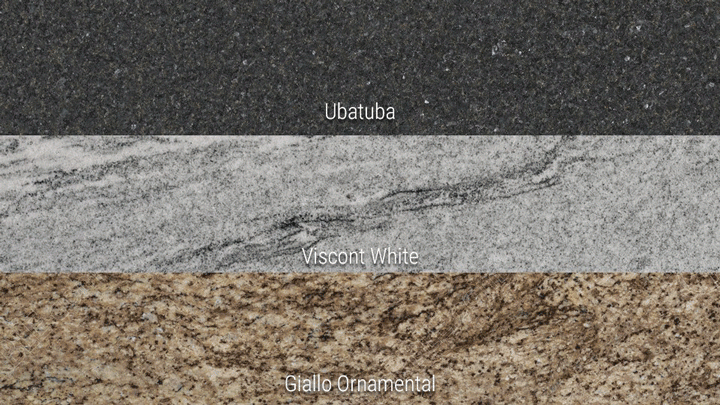
If the project budget is expended, many more stone options are available in so-called “mid-range” price points. These options would be priced around $50 to $75 per square foot, installed. Most granite countertops that are purchased fall into this price range. River White, Delicatus, and Ice White are few of the popular mid-range stones.
Countertop options are available in nearly every color and pattern. This variety allows homeowners to find their own masterpiece, as this price point will include stones with veining, patching and swirling patters. Keep in mind that granite’s application is not just limited to kitchen countertops. The material can be used in the bathroom as vanity top or a tub surround, or around a fireplace. Beautiful and unique patterns are best on display on island and peninsulas, they are used in kitchens, bathrooms, and other indoor and outdoor specialty projects.
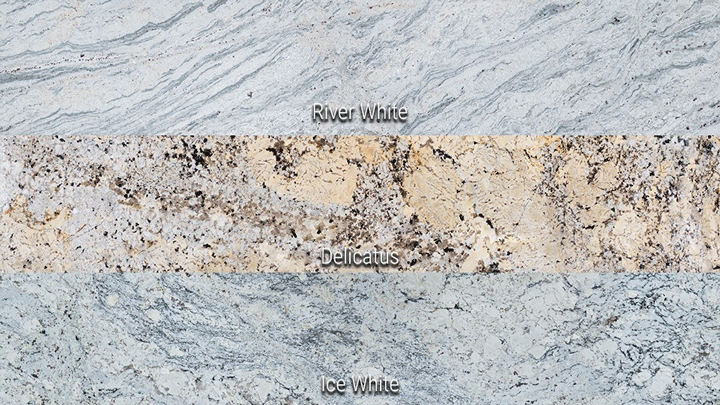
Rare, exotic granites will start at $100 per square foot, minimum, however that number can double or even triple for some of the rarest slabs on earth. The price of exotic granite is not determined by their quality or durability, but by their availability on the market. If there are only few slabs of stone available in a particular color on the market, the stone’s price will skyrocket. Unique colors, such as blues can are also known to drive the price up. Blue Bahia, Azul Aran and Altair are among the unique, most sought-after granites.

Granite prices bear no effect on its performance as a countertop or in any other application. In fact, some of the more affordable options will outperform the most expensive stones.
In Search for the Lowest Price
In pursuit of the lowest granite prices on the market, many homeowners come to realize that there are two markets through which to purchase granite countertops: national chains, and local fabricators, who specialize only in stone fabrication. Both will provide an estimate and offer some granite selection, they will then measure, fabricate and install the countertop from the stone selected. But that is where the similarities end.
Most big box home improvement chains will offer countertops for sale including installation, however, there is much more to the stone buying experience. Their selection is extremely limited, some will carry no more than 15 colors, and most will have generic patterns found in every other store. This is because their stone is purchased in bulk, from quarries that mass produce slabs. Often times, these slabs are of lesser quality.

Box stores are also not flexible on pricing: what you see on your estimate is what you get. A fabricator is far more likely to budge on the price in order to get the bid for a job. In box stores, sales staff expertise and experience can also be lacking: sales teams who sell thousands of different products may not be as knowledgeable about countertop fabrication or installation process or about the materials themselves as niche pros would be.
Local fabricators can come out stronger in almost every aspect of granite purchasing experience. Most carry their own stock in many price and color options. In most cases, fabricators are often willing to help you find a stone that they do not have in stock, simply by looking through your dream inspiration photos.
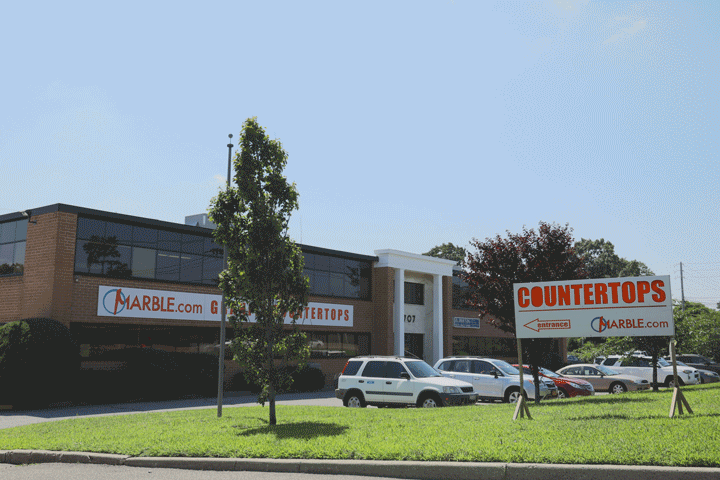
Fabricators and stone yards often purchase directly from quarries around the world, large and small, and their goal is to secure the best available material on the market. Think about it: with every countertop, they put their entire reputation at stake. Some local stores also allow customers to select the particular slab that will be cut for the project and even select which sections of the slab you’d like for particular pieces. Most importantly, fabricators control every aspect of the job: they template, cut, and install granite using their in-house employees – ensuring that the process is quick and smooth.
Keeping the Costs Down
There are several factors that fabricators use to determine the final cost of the project. They include the number of cutouts, the stone’s finish, the backsplash, edging, and others – depending on the complexity of the job. Each of these factors can play a large role in the end price. The percent this amounts to in the total price, however, it depends mostly on the customer, create an estimate using our countertop estimator tool.
Virtually every countertop will have cutouts. But to keep this number to a minimum, consider only the essentials. For example, when you are installing a kitchen countertop, you will have at least one sink and one faucet cutout. If you purchase a three-hole faucet, there will be 2 additional holes that will need to be made, and other kitchen cutouts may include those for a cooktop, soap dispenser, or trash receptacles.
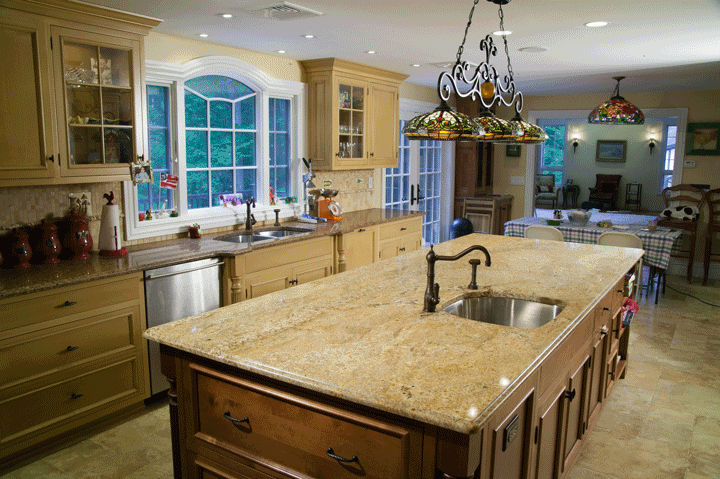
The type of sink installed also plays into the cost of the countertop. Vessel sinks will keep the cost at a minimum, because only one hole is drilled for the plumbing for the sink to be installed. This is followed by drop-in sinks, which do not require a polished cutout. Undermount sinks are typically highest in cost because the edges of the cutout will be exposed and must be polished. Cutouts may add a significant amount to your total cost, especially when you are considering vanity tops with multiple sinks and faucets. Prices for cutouts can vary between fabricators, so always ask the cost of each cutout offered in advance.

Edging accounts for a significant portion of the total cost as well. The price is often calculated by linear foot. Although you might not be able to minimize the length of the edge that is polished, the edge itself will have an impact on the price. Standard edging will keep the cost to a minimum. These edges include straight or penciled edge, quarter round, or quarter beveled. Premium edges are likely to tack on $5 or more per linear foot. Ogee and waterfall edges fall in this category: while they add another dimension to the countertop, it comes at a price. Laminate or mitered edging is by far the most expensive, as it doubles the thickness of the countertop. It is likely to cost $10 or more per linear foot, and requires more granite material to be used, which will raise the total per square foot cost.
A granite backsplash is an add-on option that can have the largest impact on the total price of the project. When selecting a countertop, most fabricators will present their clients with an option to add a granite backsplash. There are two options: a short, 4” backsplash, or a full backsplash that extends from the countertop to the wall cabinets.
A 4” backsplash is great way to save on the overall cost of the project. Whether in the kitchen or in the bathroom, this type of backsplash will protect the walls from splashes and spills. It’s an affordable alternative to tile, and is guaranteed to match the countertops. These custom backsplashes can also be fabricated to a custom height, and can be thinned down to a desired thickness. Some homeowners may choose 3” or 5” backsplashes for their projects, depending on their individual needs.
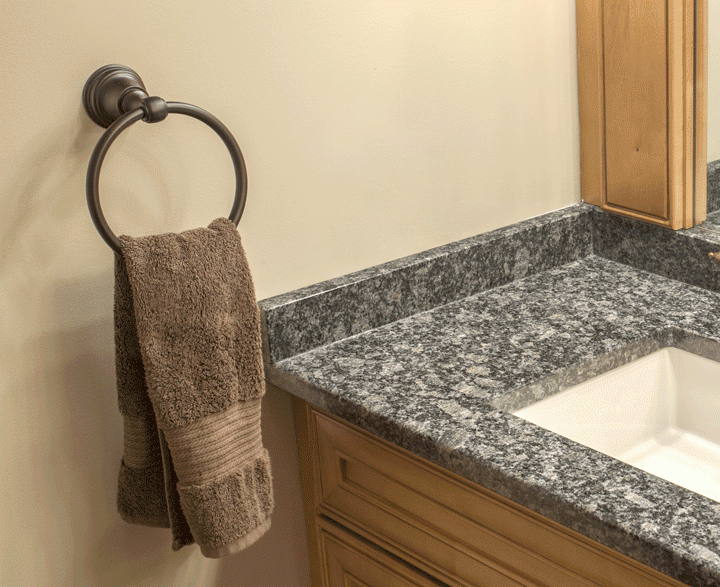
A full backsplash is another popular option, but it will add up to roughly an additional 50% of the total countertop price. Because a full backsplash extends from the countertop to the wall cabinets – or sometimes even the ceiling – it is installed after the installation of the countertop to ensure a proper fit. It’s roughly 18” in height, and is aesthetically one of the best available additions for a wall.
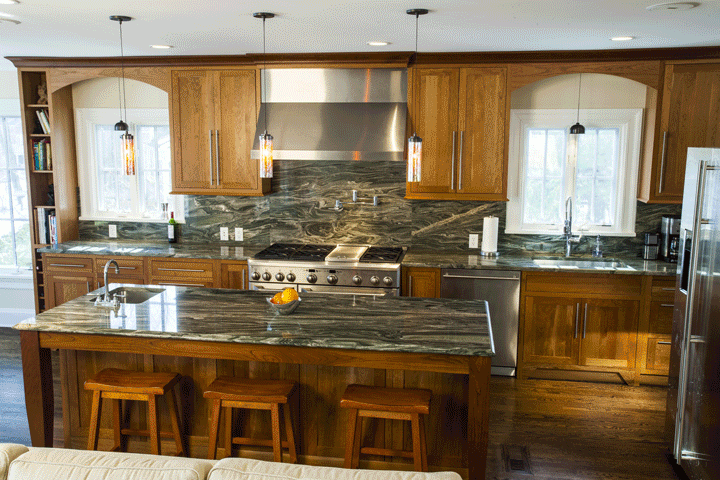
Keep in mind that a backsplash is always a recommended addition to any project. Leaving walls bare and unprotected will quickly show wear and tear on the paint, especially with any spills or other kitchen accidents. Constantly repainting walls can become expensive over time, and contribute to an uneven finish on the walls.
Removing old countertops can also save you a bundle. If your existing cabinets are in good shape, and only the countertops need to be replaced, the old countertop will need to be removed before a new one can be installed in its place. Fabricators charge between $5 and $10 per square foot for removal and disposal of old countertops, but this can often be a DIY project.
[get_quote]
First, consider the countertop material currently installed. Laminate and Formica countertops are far easier to remove than granite, as they are light and easy to detach from the cabinets. Stone countertops are far heavier, and require much more man power to be removed.
Removing countertops without any damage should be the top priority. If the cabinets are damaged during the removal process, they may be expensive to repair. Another factor to consider is the disposal of the material, as regular disposal might not be an option for stone countertops. Ask the fabricator for the price of the removal job, as heavier countertop removal will often cost more.
The finish of the stone’s surface is also reflected in the price. Most fabricators will purchase only polished slabs, but do offer other finishes – such as honed or leathered. Creating these finishes is labor intensive, and can add additional $10 or more per square foot to the raw material. Polished granite the go to option not only because of the savings but it also provides an extra layer of protection to the countertops, as they’re less likely to stain or scratch versus the honed and leathered options.
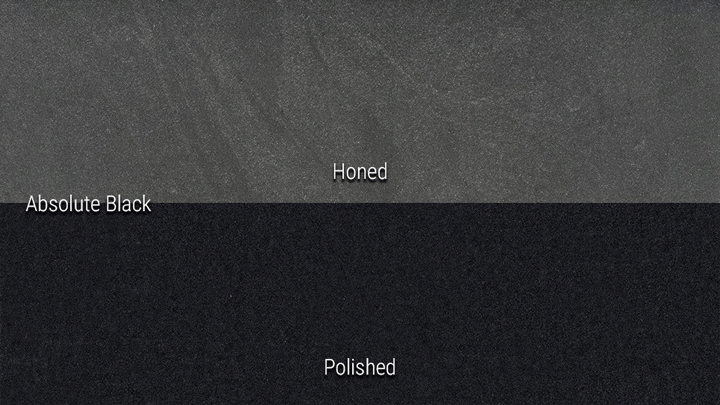
The total size of the project will determine whether a full slab is necessary to complete the job, or if it’s possible to work with a remnant. When visiting stone yards, ask if you are paying for the entire slab or just the portion that is needed for your project. Kitchen countertops will usually require one or two slabs of granite, while a bathroom vanity top will only need a small portion of that. If fabricator charges per square foot of material installed, the savings can be tremendous. Paying for an entire slab while using only a small part of it produces a lot of waste, and ultimately shoppers pay for a lot of unused material.
Smaller projects can be completed using a remnant piece of stone, which is a piece that is leftover from a previous project. Remnants are offered at discounted prices, which can offer shoppers a great bargain. It’s a great way to get a high-end stone at the fraction of the original cost.
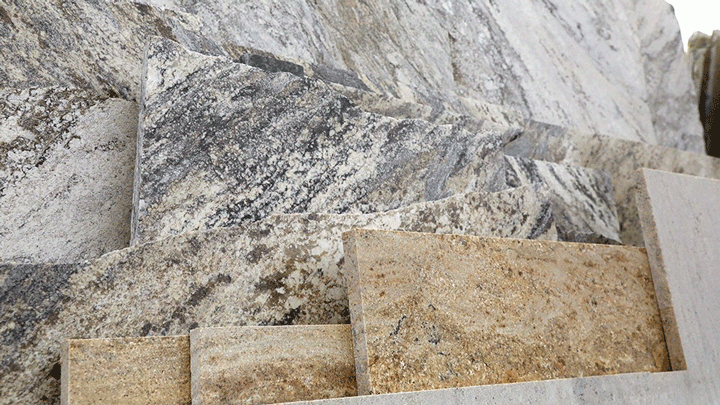
That being said, remnants should only be considered only for smaller projects. Looking to complete an entire kitchen with remnants is not ideal, and can leave you with unsightly, mismatched countertops. Even if two remnants look similar at the granite yard, they will likely have distinct variations when installed. If the sales staff expressed concern about pieces not being a compatible good match, make sure to take their expert advice into consideration.
When working with investments like granite installations, make sure to stay away from trends. Granite prices are heavily influenced by current trends, and shops are likely to raise the prices for certain colors that have gained popularity. It’s also more likely that the slab selected will not be found in as many homes best sellers.
Granite Alternatives
Today, there are many alternatives to granite available on the market. While granite is the most affordable natural stone, materials like tile, granite overlay, or laminate can all be money savers.
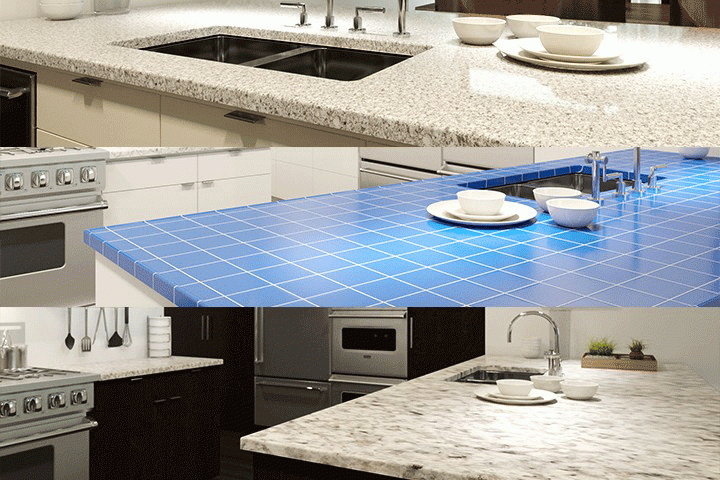
Tile had its glory days as a preferred kitchen countertop material two decades ago, however today it’s becoming increasingly popular again. Tile countertops will be considerably less expensive and can be installed without professional help. But keep in mind that it also has many considerable drawbacks. Tile comes in many colors, and it is easily replaced if one tile becomes damaged. But even high-end granite tile will not offer the same uniform, clean look as a full granite slab. The grout lines of tile are very pronounced, and they are less sanitary overall. Without proper everyday maintenance, they will harbor bacteria and collect dirt and grime. Granite tiles are also susceptible to stains because they’re far thinner. Plus, constant sealing is required to avoid damage.
Granite overlay is a relatively new alternative to granite slabs. While it’s normally not offered for purchase through granite fabricators, it can be found at large box stores. Granite overlay is a material that consists of a thin granite layer attached to a backing. It’s cheaper than granite slab because it uses considerably less stone while still providing a nearly identical look. Unlike granite slabs, overlays are shipped directly to the home and are fabricated on-site. Some homeowners choose to do their own installation, while others hire a handyman or a contractor to help. Considering that all the work, from measuring to cutting to installing must be done in-house, mistakes can become costly if any of the steps is mismanaged. It’s also difficult to avoid or match seams. Granite shops specialize in eliminating seams where possible, and matching them when they’re unavoidable, which is a difficult task with granite overlay.
[get_quote]
Some laminate countertops are created to imitate natural stone, and there are certainly granite lookalikes. But although they may share superficial similarities in color and pattern, granite and laminate are distinguishable to even an untrained eye. Even though the price in at a lower cost, laminates are not a great addition to a home and have a far lesser resale value compared to natural stone.
Natural and engineered stone alternatives to granite include marble, quartz, quartzite, soapstone, and slate. Each material has unique physical properties, which are reflected in the unique look of the material. These natural stone options are typically higher in the price – with exception of quartz, an engineered material sold by most fabricators – and are less durable as kitchen countertops.
DIY Not Recommended
Installation of granite countertops is not considered at the DIY project even by the most experienced contractors and home improvement professionals. There is a good reason for that. Granite is extremely heavy: it can weight between 15lbs and 20lbs per square foot, and it’s not uncommon for sections of countertops to exceed weighing 200lbs or more. If this is not enough discouragement, consider that fabrication cost will still remain the same and transportation for the stone will need to be arranged for. Granite must be transported on specially designed frames that keep the stone upright. The benefits of having the countertops professionally installed far outweigh the costs. There are many reasons you will be glad the installers did the job.
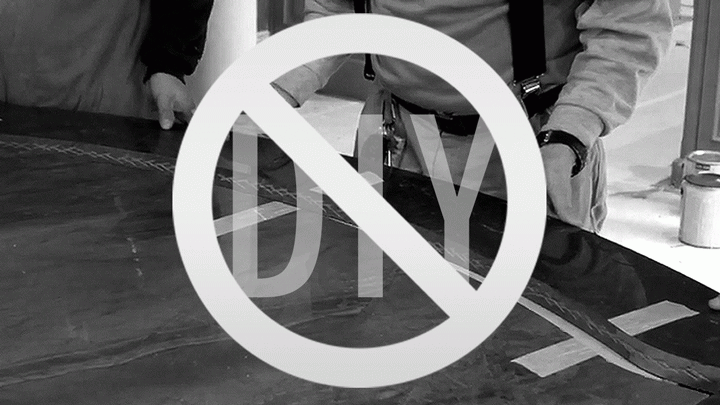
Granite is a great addition to any home, whether it be through kitchen countertops, a vanity top, or a fireplace surround. It is versatile, requires little maintenance, and every piece of stone is completely unique – making granite one of the best all-around options in natural stone. The overall cost of granite countertops is determined by the stone selected, edge profile and other factors, however most affordable granite will cost around $35 per square foot installed. It’s a great way to update your home’s décor while adding value to your property.
National Average
$4,000
(30 sq.ft. of moderate countertop with eased edge, undermount sink, and no backsplash)
Cost to install kitchen countertops varies greatly by region (and even by zip code). Get free estimates from countertop installers in your city.
Find out how much your project will cost.













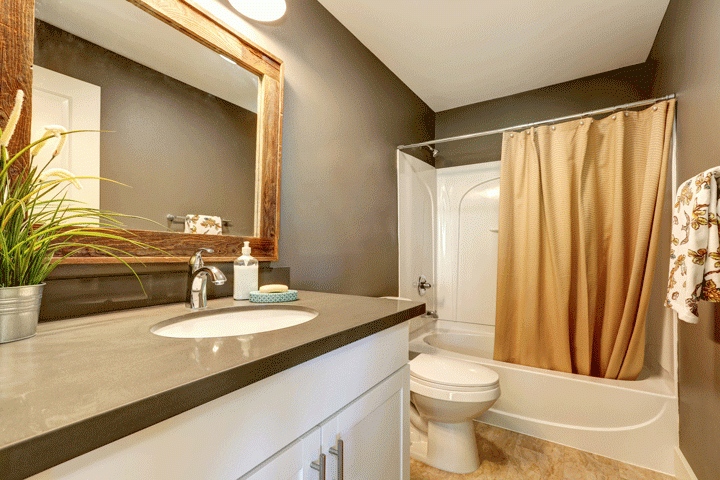
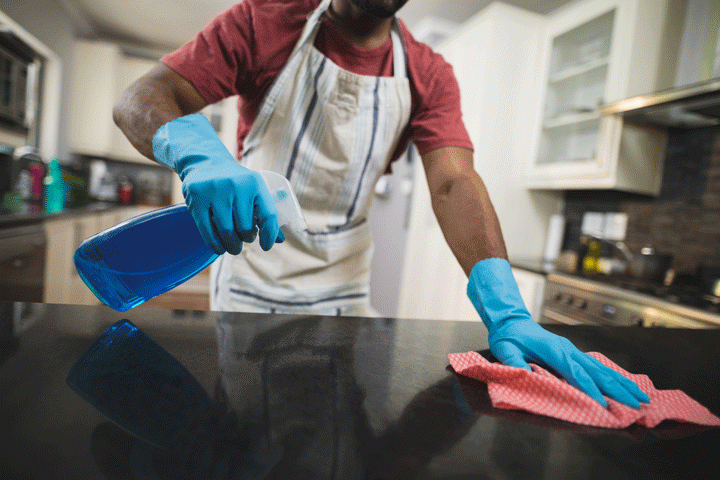
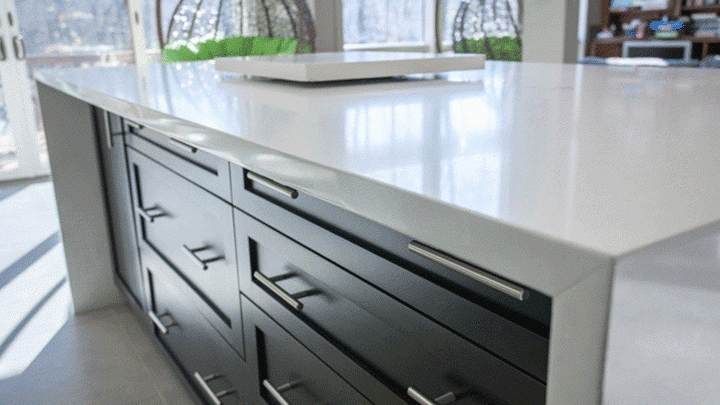
 The article helped me immensely
The article helped me immensely
 I’m now more informed on the subject
I’m now more informed on the subject
 I have questions about Marble.com
I have questions about Marble.com
 The article was not accurate at all
The article was not accurate at all
 There is a serious lack of information
There is a serious lack of information
 I have questions about Marble.com
I have questions about Marble.com